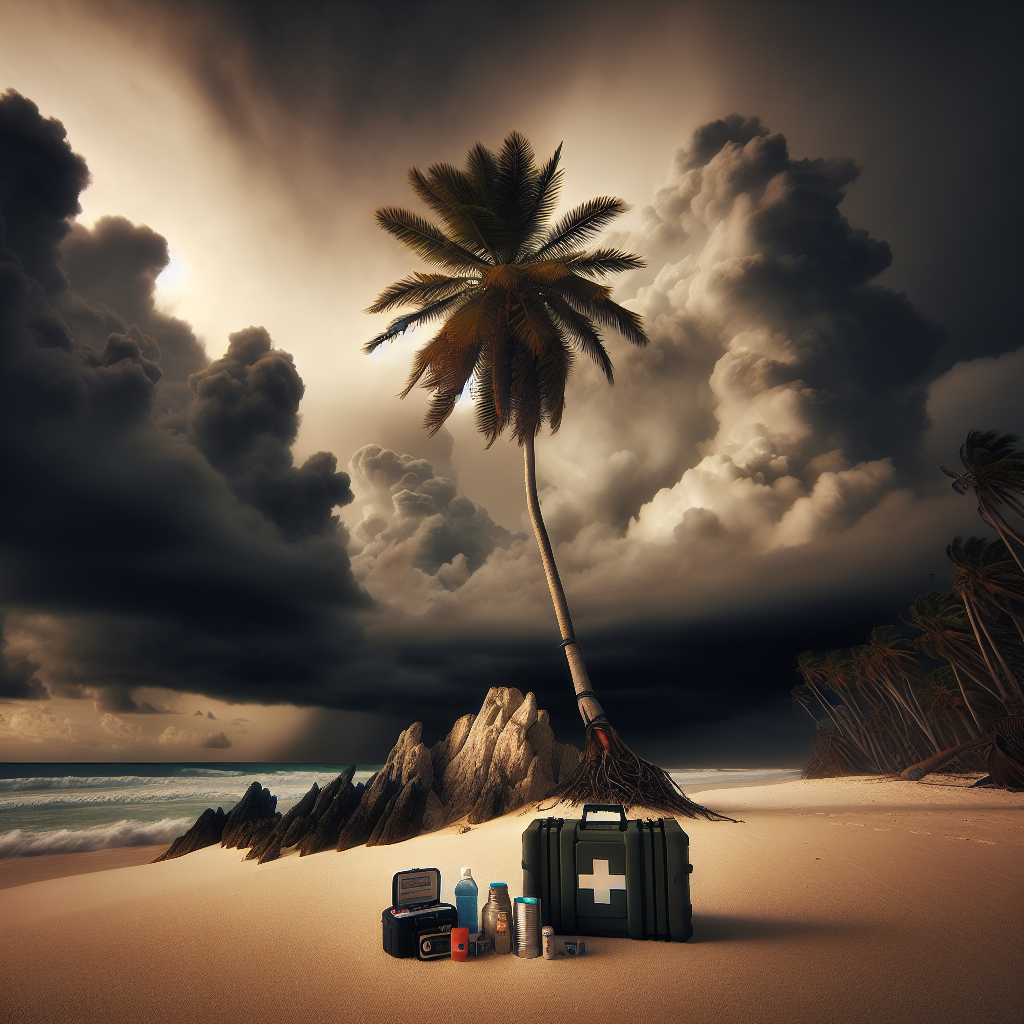Imagine lounging on a beautiful Mexican beach, soaking up the sun and enjoying the gentle breeze. Suddenly, dark clouds gather overhead, and you hear the distant rumble of thunder. It’s a hurricane warning, and panic starts to set in. But fear not, for in this article, we will guide you on how to prepare for a hurricane while on a Mexican beach. From essential items to prioritize in your emergency kit to creating a communication plan with loved ones, we will cover everything you need to know to stay safe and secure during this natural disaster. So grab a pen and paper because you’re about to become a hurricane preparedness expert!
Understanding Hurricanes
What is a hurricane?
A hurricane is a powerful tropical storm characterized by strong winds, heavy rainfall, and destructive storm surges. It forms over warm ocean waters and typically develops in the Atlantic Ocean or the eastern Pacific Ocean. Hurricanes are known by different names in different parts of the world, such as typhoons or cyclones.
Types of hurricanes
There are primarily three types of hurricanes: tropical depressions, tropical storms, and hurricanes. A tropical depression is the least intense and has sustained winds of less than 39 miles per hour (mph). A tropical storm has sustained winds between 39 mph and 73 mph. A hurricane is the most severe type and has sustained winds of 74 mph or higher.
Hurricane categories
Hurricanes are categorized based on their wind speeds using the Saffir-Simpson Hurricane Wind Scale. The scale ranges from Category 1 (weakest) to Category 5 (strongest). Category 5 hurricanes have winds exceeding 157 mph and can cause catastrophic damage.
Formation of hurricanes
Hurricanes form over warm ocean waters when the atmospheric conditions are favorable, including low wind shear and high humidity. The process begins with a disturbance, such as a tropical wave or a low-pressure area, which develops into a tropical depression. As the system gains strength, it may evolve into a tropical storm and eventually a hurricane.
Hurricane season in Mexico
Mexico is prone to hurricanes, particularly along its eastern and western coastlines. The Atlantic hurricane season runs from June 1 to November 30, while the Pacific hurricane season runs from May 15 to November 30. The peak of the season usually falls between August and October.
Tracking hurricanes
Meteorological organizations and agencies use various tools and technologies to track the development and path of hurricanes. These include satellite imagery, radar systems, hurricane hunter aircraft, and computer models. Tracking hurricanes helps provide accurate forecasts and warnings, enabling individuals and authorities to take necessary precautions.
Predicting hurricane landfall
Predicting the exact landfall location of a hurricane is complex due to the numerous variables involved. Meteorologists use computer models to make projections based on the current atmospheric conditions, historical data, and other factors. However, the accuracy of these predictions can vary, and it is essential to remain vigilant and prepared even if the forecasted path changes.
Effects of hurricanes
Hurricanes can cause a wide range of devastating effects. The most obvious is the damage caused by strong winds, which can destroy buildings, uproot trees, and knock down power lines. Additionally, hurricanes often bring heavy rainfall, leading to severe flooding and landslides. The storm surge, a rise in sea level near the coast, is another major concern as it can inundate low-lying areas and cause significant damage.
Preparing for hurricane season
Preparing for hurricane season is crucial to ensure the safety and well-being of individuals and their families. It involves creating an emergency plan, assembling necessary supplies, securing accommodations, and staying informed about potential threats and evacuation orders. By taking proactive measures, individuals can minimize the risks and effectively navigate through the challenges posed by hurricanes.

Emergency Preparedness
Creating an emergency plan
Creating an emergency plan is essential for any potential disaster, including hurricanes. It involves identifying evacuation routes, designating a safe meeting place for family members, and establishing a system for emergency communication. The plan should consider the specific needs of family members, such as infants, elderly individuals, or individuals with disabilities.
Knowing the evacuation routes
Being familiar with the evacuation routes in your area is vital to ensure a safe and timely evacuation if necessary. Official evacuation routes are designated by local authorities and are typically well-marked. It is important to have these routes mapped out in advance and to be aware of any alternative routes that may be less congested.
Assembling an emergency kit
An emergency kit should contain essential supplies to sustain individuals and their families for at least 72 hours. This includes non-perishable food items, drinking water, medications, first aid supplies, flashlights, batteries, a radio, and personal hygiene items. It is also advisable to include important documents, such as identification papers, insurance policies, and copies of prescriptions.
Ensuring access to necessary documents
Before a hurricane strikes, it is crucial to ensure easy access to necessary documents in case of evacuation or damage to your property. Make copies of important documents, such as identification papers, insurance policies, and medical records, and store them in a waterproof and portable container. It is also wise to have scanned versions of these documents saved electronically.
Securing important belongings
Securing important belongings helps protect them from damage during a hurricane. This includes securing outdoor furniture, equipment, and loose objects that could become projectiles in high winds. It is also advisable to move valuable or sentimental items to higher ground or to a secure location within the accommodation.
Arranging emergency communications
Establishing a reliable system for emergency communication is vital during a hurricane. Ensure that all family members have access to mobile phones or radios and have a designated meeting place or contact person in case of separation. It is also important to keep emergency contact numbers, including those for local authorities and healthcare providers, easily accessible.
Identifying emergency shelters
In areas prone to hurricanes, emergency shelters are often designated to provide temporary accommodations for individuals who need to evacuate their homes. Familiarize yourself with the locations of these shelters in your community and pay attention to any instructions or orders issued by local authorities to seek shelter.
Understanding emergency alerts
During a hurricane, emergency alerts are crucial for providing timely and important information to the public. These alerts can be received through various channels, including television, radio, smartphone apps, or text messages. It is important to understand the different alert levels and to follow the instructions provided by authorities.
Establishing a family communication plan
A family communication plan ensures that everyone is aware of the necessary steps to take during a hurricane. Assign roles and responsibilities to family members, such as checking the weather updates, monitoring the emergency radio, or gathering the emergency kit. Regularly review and practice the communication plan to ensure its effectiveness.
Preparing pets for hurricanes
Pets are important members of the family, and their safety should not be overlooked during hurricane preparations. Ensure that your pets have identification tags and microchips in case they become lost. Prepare an emergency kit for your pets, including food, water, medications, and comfort items. Familiarize yourself with local pet-friendly shelters or accommodations in case of evacuation.

